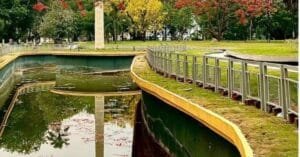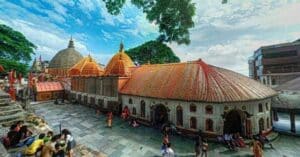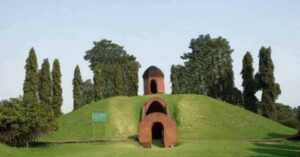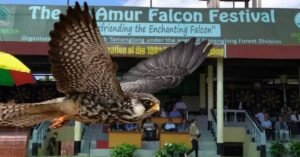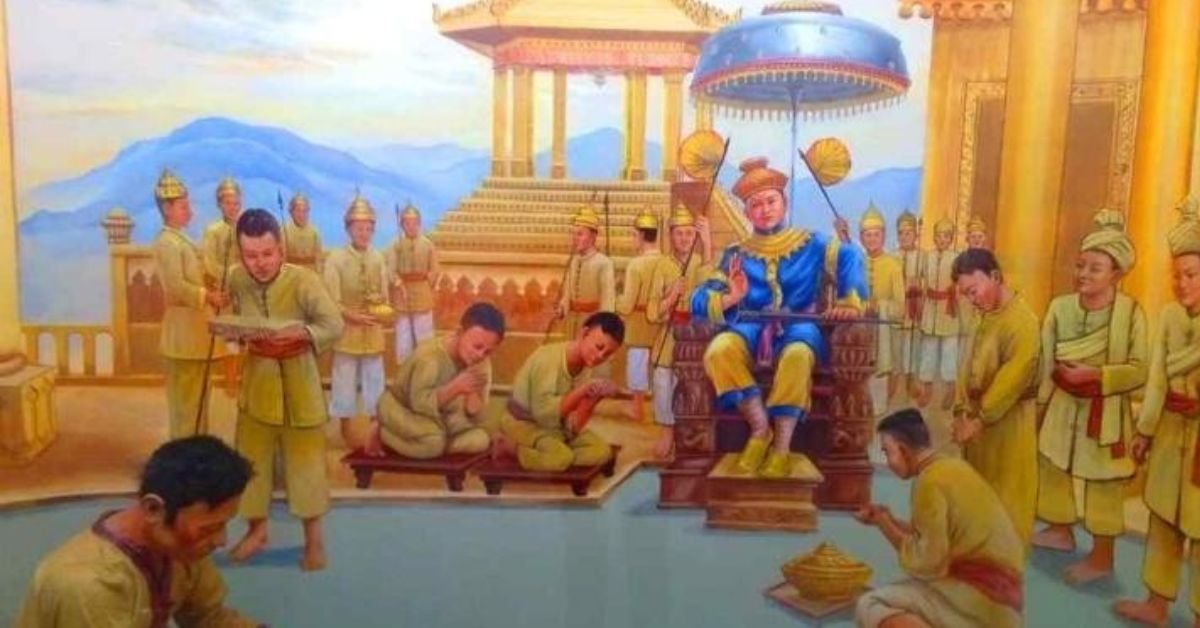Guwahati, the heart of Assam, stands as a living testament to the region’s rich history. The city has been a silent observer of many historical milestones. But beyond these events, every locality in Guwahati carries its own unique story. In this blog, we will delve into the fascinating tales behind the names of some of the most iconic places of Guwahati, uncovering the history woven into the fabric of Guwahati’s neighbourhoods.
Dispur
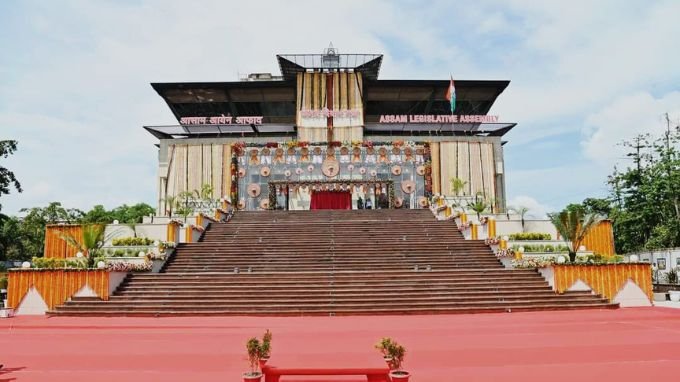
Dispur serves as the administrative center of the Government of Assam, having been designated the capital of Assam in 1973. The name “Dispur” is derived from the ancient kingdom of Pragjyotishpur, which later became Jyotishpur, and over time, evolved into Dispur due to local variations in pronunciation.
Guwahati Railway Station
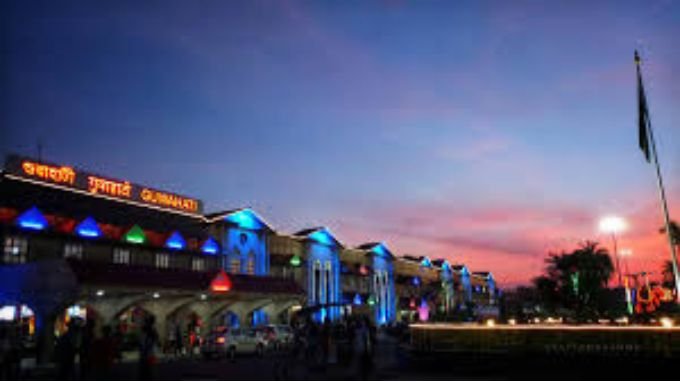
The area where Guwahati railway station is now located was once known as Ketekibari, named after the ‘Keteki’ or screw pine (Pandanus odoratissimus) plants that grew there. The name gradually faded after the railway station was established in 1896-97.
Sarania Hill
Sarania Hill in Ulubari was formerly known as Chitrakut Parbat. The name ‘Sarania’ originates from an Ahom king who became a disciple of a local priest and from the ‘Saran Lowa’ or the adoption of Neo Vaishnavite Religion established by Sarkardeva.
Paltan Bazaar
During the British period, the first official army camp was established in and around present-day ‘Paltan Bazar’, a key transportation hub in Guwahati. The camp used to accommodate a platoon or ‘Paltan’ of soldiers, and the market that developed around it became known as Paltanbazar, serving the needs of the soldiers stationed there.
Similarly, Fancy Bazar, one of the largest business hubs in northeast India, was once known as Keyanpatty. The term “Keyan” in Assamese refers to Marwari traders.
Jorpukhuri
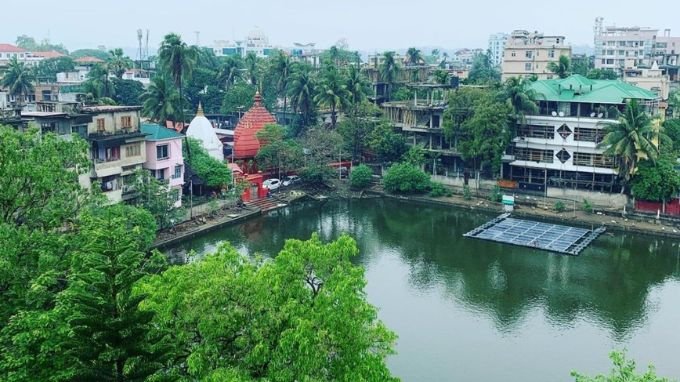
Jorpukhuri, one of the most iconic places of Guwahati, was originally known as Ugratara Pukhuri because it is near the Ugratara Temple. Jorpukhuri, or the twin ponds, was constructed by Swargadeo Siva Singha to fulfill the water requirements of the Ugratara Temple. It was made to connect with the Brahmaputra River through the Naojan Channel, making it easier for Ahom royals to visit the temple. Jorpukhuri serves as a vital conservation center for rare freshwater turtles.
Uzanbazar
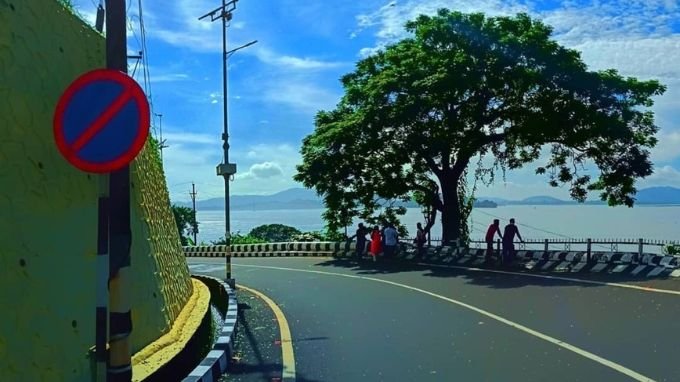
During the early British period, a market named Chowk Bazar was located beside Latasil Field. The market expanded toward ‘uzan’ or upstream of the Brahmaputra, eventually known as Uzanbazar. It is speculated that the name ‘Uzan Bazar originated from the nearby Naojan canal, where fish were known to move upstream (maasor uzan). Some suggest it was named after people who migrated from Ujani or Upper Assam during the Burmese invasion (1817-1826), giving the area its name. In the 1800s, Assam’s first Durga Puja was organized by people who migrated from Upper Assam in Uzanbazar.
Three most iconic places of Guwahati: Uzanbazar, Panbazar and Fancybazar was collectively called the European Ward during the British Period.
Ambari, located southeast of Dighalipukhuri, was formerly known as Dhindangpara and later as Company-bagan because of a British-owned garden. The area was filled with mango trees, which is why it is now called Ambari.
Ulubari is an important locality in Guwahati, It was once a mix of small canals, drains, and arid wastelands and had a profusion of thatch grass, known as ‘Ulubon’. As people settled in the area, the thick growth of thatch grass, known as “ulubonor haabi” or thatch grass jungle, led to the locality being named ‘Ulubari”.
Silpukhuri Tank
Until the 1880s, the body of water now known as Silpukhuri Tank was originally referred to as Na-Konia Pukhuri, which translates to “nine corners.” It was excavated concurrently with the construction of the Nabagraha Temple and had a unique design featuring nine corners, each associated with one of the nine planets. This reservoir held a sacred status because it was widely believed that the water used for bathing the temple idols flowed into the tank.
What sets Silpukhuri apart is the presence of a rock inscription on its bank, a feature not found alongside any other tank from the Ahom era. Scholars, such as Dr. Maheswar Neog, suggest that the name “Silpukhuri” likely originated from this rock, as the Assamese word ‘Sil’ signifies a rock.
Jor Pukhuri
In 1720 AD, during the rule of Swargadeo Siba Singha, Jor Pukhuri was excavated to serve the needs of the priests and pilgrims visiting the Ugratara Temple. To connect this tank to the Brahmaputra, a canal known as Naojan was constructed, which the Swargadeo used to access the temple while in Gauhati. Regrettably, this canal has since been transformed into a mere sewage channel. Subsequently, during the British colonial period, the tank was divided into two parts, and a road was built along its center, giving rise to its modern name, Jor Pukhuri.
Nag-kota Pukhuri
Located along Motilal Nehru Road in Panbazar, the Nag-kota Pukhuri, an ancient reservoir, has a connection with the Sukreswar Temple through a fascinating legend. According to this tale, during the inauguration of the temple, Swargadeo Pramatta Singha (1744-1751 AD) performed a ritual in which a significant snake was sacrificed. The name ‘Nag-kota’ translates to “killing of snakes” in Assamese. The snake, a revered entity, was venerated at the Nagpota or Nagkota Pukhuri site and interred there, thus bestowing the reservoir with its name.
These ponds namely Silpukhuri, Jor Pukhuri and Nag-kota Pukhuri are visited for morning worship, evening walk, performing various rituals at the temples near theses ponds. Besides, these ponds have been used by numerous birds during extreme hot summer season in Guwahati.






